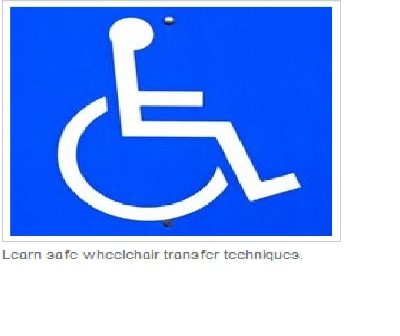


 |
 |
 |
 |
 |
 |
 |
 |
 |
 |
 |
 |
 |
 |
 |
 |
 |
 |
 |
 |
 |
 |
 |
 |
 |
 |
 |
 |
 |
 |
 |
 |
 |
 |
 |
 |
 |
 |

All provided information supports the fact that Federal, State Laws must be followed without exception of fact. All facility policy and procedures must be followed. In the event of exception to fact, contact your direct NurseLine Healthcare Supervisor and the facility supervisor for direction.
How To Transfer A Patient From Bed To Wheelchair Using A Hoyer Lift:
Getting prepared for the move and that you follow all facility policies and procedures. Remember, this information is a guide only!
Make sure you're ready, loose and comfortable with the patient. Above all, you should request help from your supervisor or co-worker.Step 2: What you'd expect to see:
* 1) Gently pull patient to sitting position in bed.
* 2)Gently turn patient with legs being placed on the floor.
* 3) You are now ready to place the gait belt around the patients waist making sure to pull it tightly leaving enough room to place your fingers under the belt. Make sure patient is in a secure position.
* 4) Position wheel chair at a 30 degree angle or which ever is comfortable for you. I have found the 30 is much easier for myself in a transfer. Do this prior to locking breaks.
* 5) Hug patient keeping your legs shoulder width apart and patients legs between yours.
* 6) Make sure your back is straight and your hands meet in the center of lower back on the belt. Gently pull patient closer to edge of bed.
* 7) Reposition yourself once patient is closer to edge of bed. It's okay to take one last look at where you are going before you move the patient.
* 8) Now that you are positioned you are ready for the transfer. With your hands at the center of lower back over the belt place your fingers under the belt, with the patients legs between yours you want to gently squeeze their knees with yours as you lift them to a standing position.
* 9)Once standing, pivot toward chair, returning to squat position as you are placing the patient in chair, maintain a straight back as you do this, do not bend.
How to Lift Patients: Wheel Chair GuideYou need to practice proper technique when transferring an individual from a wheelchair to a different chair, a bed or the toilet for the safety not only of the patient, but the caregiver. While there are a number of mechanical lifting aides that can help caregivers perform such tasks, they they can cost money and many home-based caregivers can't afford them. Using proper lifting and transfer techniques will ensure a smooth transfer--comfortable and safe for the patient and his caregiver--regardless of scenario.
Instructions Difficulty: Challenging
1. Situate the wheelchair closest to the stable chair, bed or location to which you are transferring the patient. For example, if you're transferring the patient to a toilet, push the wheelchair into the bathroom so the patient faces you.
2.
Place the wheelchair as close to the transfer object as possible. Using the toilet for an example, place the wheelchair so that the patient's feet sit as close to the center of the base of the toilet as possible.
3. Lock the wheels of the wheelchair in place. This prevents the wheelchair from sliding or moving during the transfer. Lift the patient's feet from the footrests and lift them out of the way.
4. Encourage the patient to help lift his body weight by placing his hands on each of the armrests of the wheelchair and pushing upward when you give the signal. You may use a gait belt if desired, or carefully wrap your arms around the patient's chest. Never pull a person from a wheelchair by his arms, especially if he's older. This may dislocate his wrist, elbow or shoulder joint or cause injury.
5.
Place your feet slightly wider than shoulder distance apart for stability. If the toilet is to your right, place your left foot between the patient's feet so that you can pivot with your right foot as you're lifting the patient from the wheelchair and placing him on the toilet. Take small steps to turn your body to position the patient, trying not to lift and twist your lower back at the same time. If the toilet sits to your left, you'll place your right foot between his feet and pivot on your left foot.
6. Agree on a signal so that the patient knows when you're going to lift. Bend your knees while wrapping your arms around the patient's chest, or using the gait belt, then lift his body up and forward, using the muscles of your thighs, hips and buttocks. Pull in your abdominal muscles for additional back support.
7. Pivot on your main weight-bearing foot and then turn your body in small steps until the back of the patient's legs touch the bed, other chair or toilet seat. Gently lower the patient to the chair, bed or toilet.
8. Repeat the process in reverse for returning the patient to the wheelchair.
